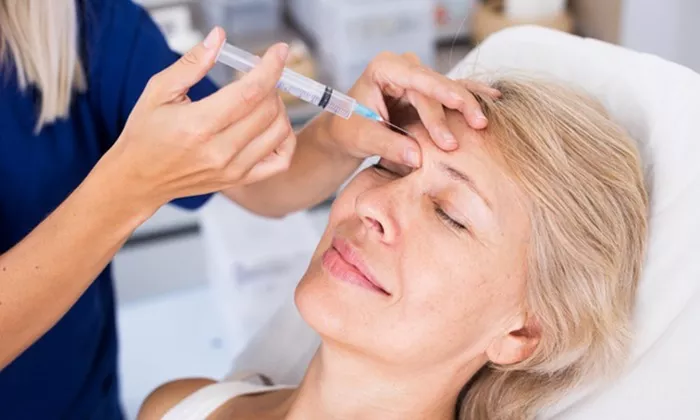Crow’s feet, also known as lateral canthal lines, are fine lines and wrinkles that develop at the outer corners of the eyes. They are a common sign of aging and can affect individuals of all ages. These lines can make a person appear older, tired, or even sad. The development of crow’s feet is primarily due to repeated facial expressions, such as smiling or squinting, combined with the natural aging process and environmental factors like sun exposure. While many people seek over-the-counter creams and treatments to reduce these lines, these options often fall short of delivering significant results.
Botox, a popular cosmetic treatment derived from botulinum toxin type A, has gained prominence as an effective solution for crow’s feet. This article will explore the efficacy of Botox in treating crow’s feet, including its mechanism of action, benefits, potential side effects, and considerations for those contemplating this treatment.
Understanding Crow’s Feet
What Causes Crow’s Feet?
Crow’s feet develop due to several factors:
Aging: As we age, our skin loses collagen and elastin, making it less elastic and more prone to wrinkles.
Facial Expressions: Repeated movements of the facial muscles around the eyes contribute to the formation of fine lines.
Sun Exposure: UV rays can damage skin fibers, accelerating the aging process and promoting wrinkle formation.
Smoking: Tobacco use can reduce blood flow to the skin, further contributing to premature aging.
Genetics: Family history can play a role in how quickly one develops wrinkles.
These factors combine to create the characteristic lines known as crow’s feet.
The Role of Botox in Treating Crow’s Feet
What is Botox?
Botox is a neuromodulator that temporarily relaxes muscles by blocking nerve signals. It is made from botulinum toxin type A, which is produced by the bacterium Clostridium botulinum. When injected into specific facial muscles, Botox prevents them from contracting. This results in a smoother appearance of the skin above these muscles.
How Does Botox Work on Crow’s Feet?
When Botox is injected into the muscles around the eyes (specifically the orbicularis oculi), it effectively reduces muscle contractions that cause crow’s feet. By blocking these signals, Botox allows the skin to smooth out over time. Patients typically notice a reduction in the appearance of crow’s feet within a few days after treatment.
Efficacy of Botox for Crow’s Feet
Research has shown that Botox is highly effective in treating crow’s feet. In studies involving over 1,300 patients, more than 70% reported significant improvement in their wrinkles within 30 days after receiving Botox injections. The optimal dosage for treating crow’s feet is usually around 24 units, administered in specific areas around each eye.
Benefits of Botox for Crow’s Feet
Non-Invasive Treatment
One of the main advantages of Botox is that it is non-invasive. Unlike surgical options such as facelifts or eyelid surgery, Botox injections require no downtime and can be performed quickly in an outpatient setting.
Quick Results
Patients often see noticeable results within just a few days after treatment. The effects typically last for three to four months before gradually wearing off.
Minimal Discomfort
Botox injections are generally well-tolerated by patients. The procedure involves using a fine needle to minimize discomfort. Many practitioners offer numbing cream or ice packs to enhance patient comfort during the procedure.
Preventive Benefits
Some individuals choose to start Botox treatments before significant wrinkles develop as a preventive measure. Early intervention may help delay the onset of deeper lines and maintain a youthful appearance longer.
Potential Side Effects of Botox
While Botox is considered safe when administered by qualified professionals, some potential side effects include:
Bruising or Swelling: Minor bruising or swelling at the injection site is common but usually resolves quickly.
Headaches: Some patients may experience headaches following treatment.
Drooping Eyelids: In rare cases, improper injection technique can lead to temporary drooping of the eyelids.
Allergic Reactions: Although rare, some individuals may experience allergic reactions to Botox.
It is crucial for patients to discuss their medical history with their provider to ensure they are suitable candidates for treatment15.
Considerations Before Getting Botox
Choosing a Qualified Provider
Selecting a qualified and experienced provider is essential for achieving optimal results with Botox. Patients should look for licensed practitioners who specialize in cosmetic procedures and have a good reputation.
Realistic Expectations
Patients should have realistic expectations regarding the outcomes of Botox treatment. While it can significantly reduce the appearance of crow’s feet, it may not eliminate all wrinkles or prevent new ones from forming.
Timing and Maintenance
Botox results are temporary; therefore, patients need to schedule follow-up treatments every three to four months to maintain their desired appearance. Discussing a long-term treatment plan with their provider can help patients achieve consistent results.
Conclusion
Botox is an effective and popular option for treating crow’s feet. Its ability to relax facial muscles leads to smoother skin around the eyes and helps restore a youthful appearance. With minimal discomfort and quick recovery times, many individuals find Botox an appealing alternative to more invasive procedures.
As with any cosmetic treatment, it is vital for patients to consult with qualified professionals who can provide personalized advice based on individual needs and medical history. By understanding how Botox works and what to expect from treatment, individuals can make informed decisions about their aesthetic goals.
In summary, if you are considering addressing crow’s feet with Botox injections, you are not alone—many people seek this treatment as part of their anti-aging regimen. With careful planning and professional guidance, you can achieve smoother skin and boost your confidence effectively.
Related topic:
How Long Does Botox for Hyperhidrosis Last?
How Long Does a Vial of Botox Last?


